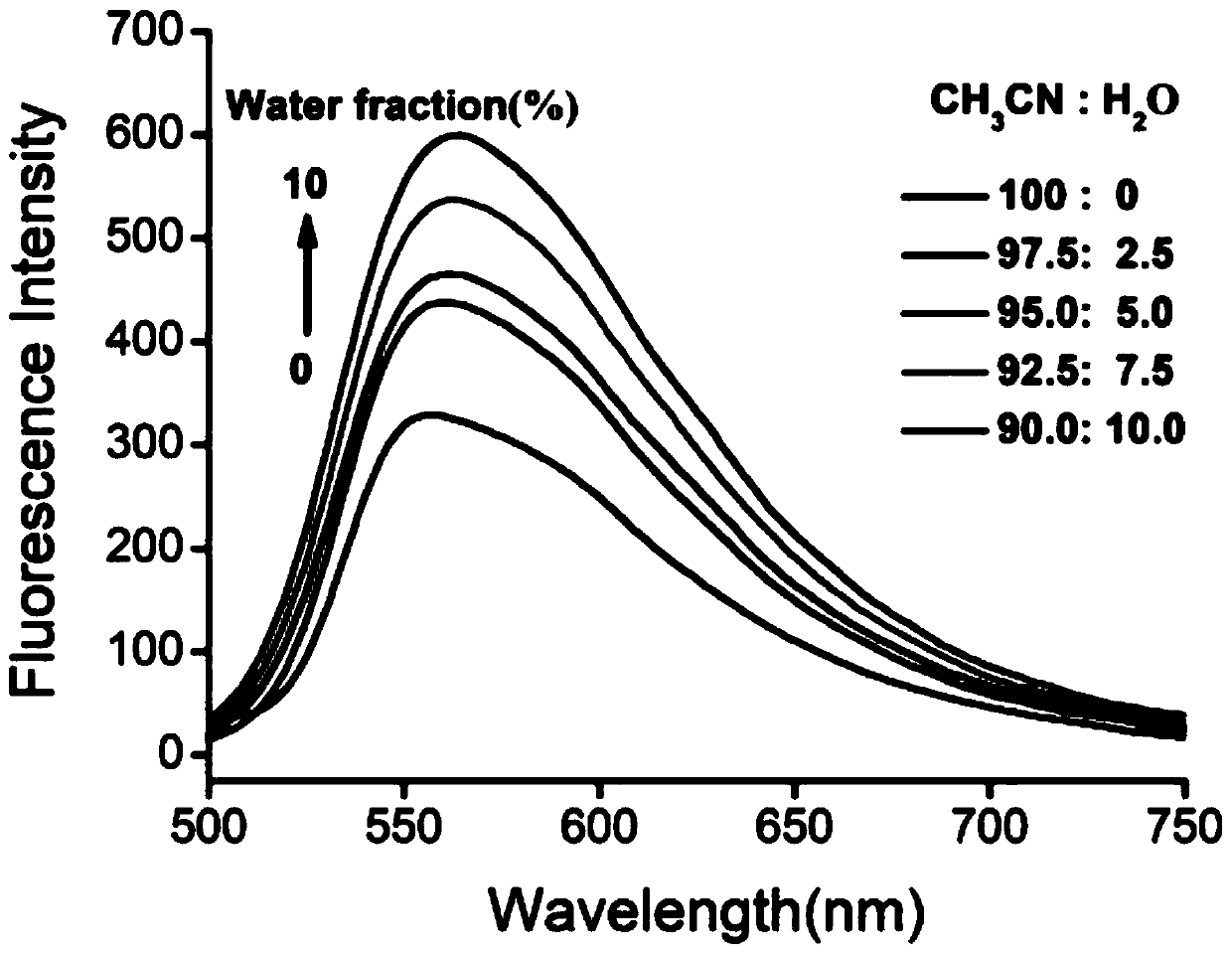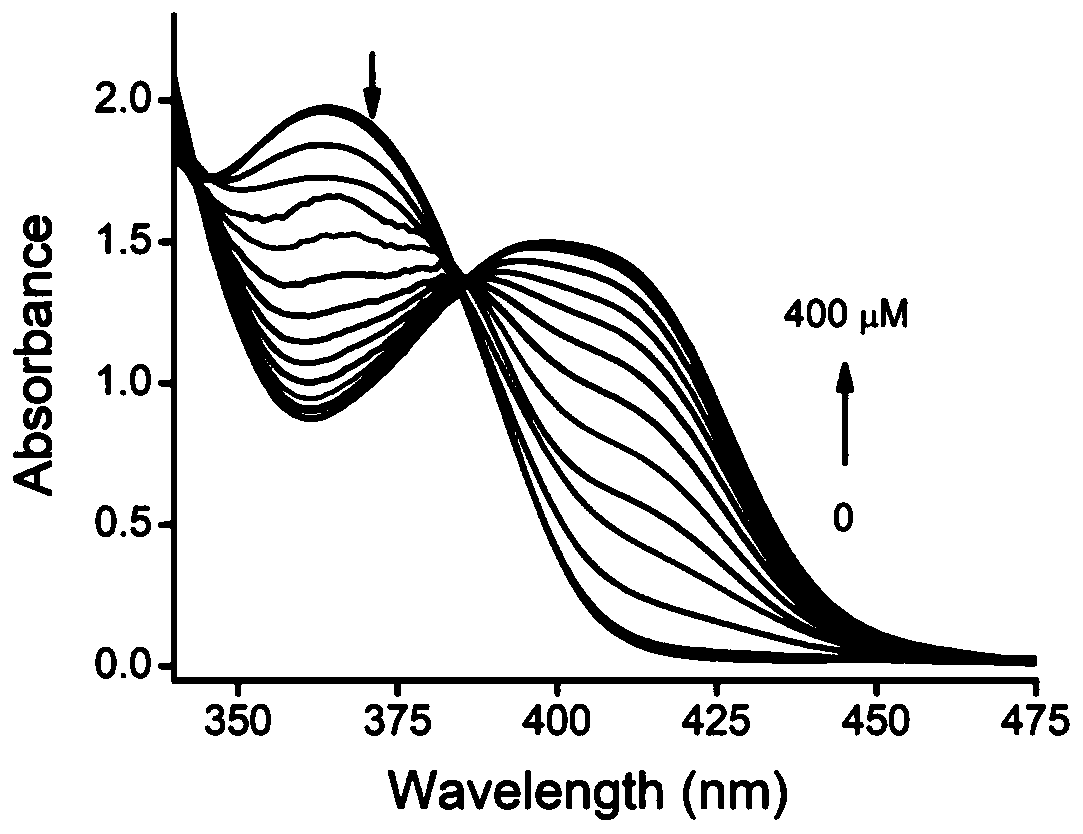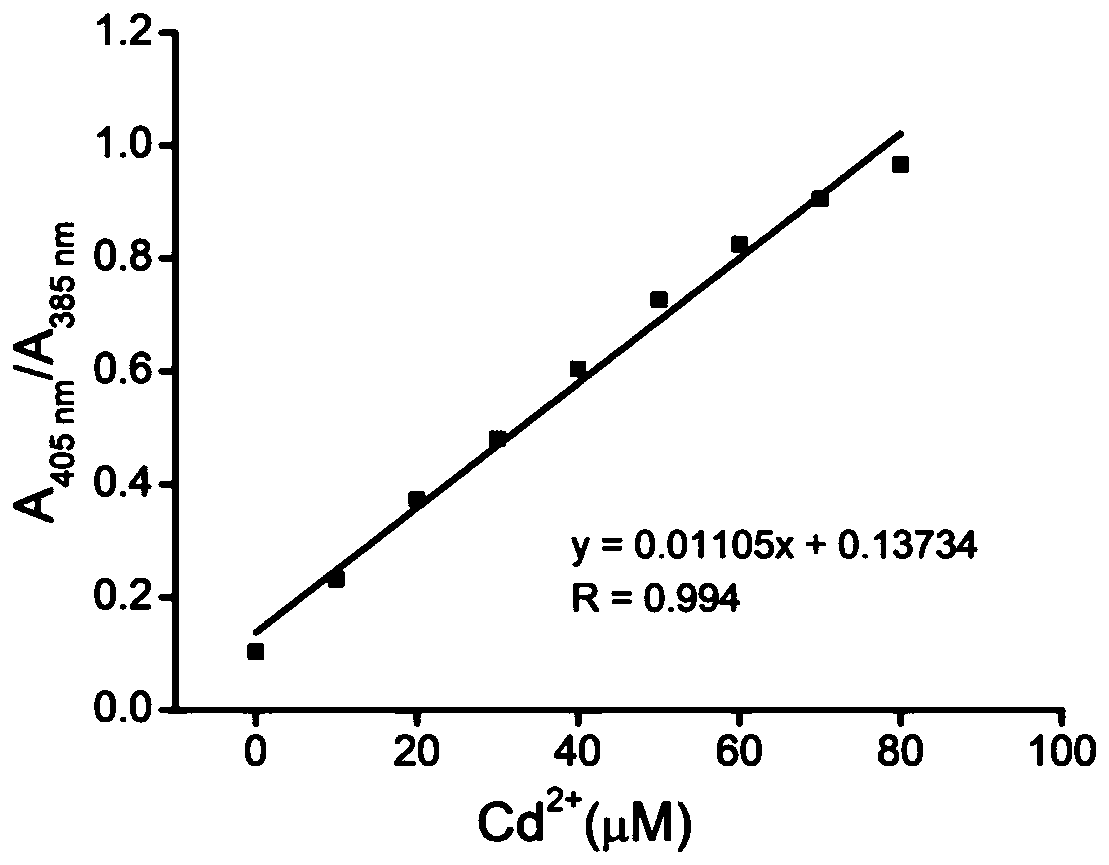Cd<2+> fluorescence probe with AIE (aggregation-induced emission) property as well as preparation method and application of Cd<2+> fluorescence probe
A technology of fluorescent probes and properties, used in fluorescence/phosphorescence, chemical instruments and methods, luminescent materials, etc., can solve the problems of limited wide application, slow detection speed, high detection price, etc. Inexpensive, high-yield effects
- Summary
- Abstract
- Description
- Claims
- Application Information
AI Technical Summary
Problems solved by technology
Method used
Image
Examples
preparation example Construction
[0032] A kind of Cd with AIE property of the present invention 2+ The preparation method of fluorescent probe, concrete steps are as follows:
[0033] Step 1, 2,6-diformyl-4-methylphenol and 2-aminopyridine are added to the round bottom flask according to the ratio of the amount of substances of 1:2, then methanol is added to the round bottom flask, and the round bottom Place the flask in an oil bath, stir and reflux for 3 to 4 hours;
[0034] The mass volume ratio of 2,6-diformyl-4-methylphenol and methanol described in step 1 is 1g:50mL.
[0035] The temperature of the oil bath in step 1 is 65°C.
[0036] Step 2, mix dichloromethane and methanol with a volume ratio of 5:1 to form a mixed solvent as a developing solvent, and monitor the progress of the reaction until the concentration of 2,6-diformyl-4-methylphenol and 2-aminopyridine Stop the reaction as soon as the raw material point disappears, cool to room temperature (25°C), and filter with suction to obtain a light y...
Embodiment 1
[0037] Embodiment 1: the synthesis of fluorescent probe Probe 1:
[0038] In a 100 mL round bottom flask, 2,6-diformyl-4-methylphenol (0.164 g, 1.0 mmol), 2-aminopyridine (0.216 g, 2.0 mmol) were successively added, and then 25 mL of methanol was added to dissolve. In an oil bath at 65°C, stir and reflux with a magnetic stirrer for 3 to 4 hours, use dichloromethane and methanol (5:1, V:V) as the developing solvent, and use a thin-layer chromatographic plate to detect the reaction progress until the two raw material points When the disappearance, the stirring was stopped, the reaction system was cooled to room temperature, filtered with suction, and the obtained solid was dried to obtain Probe 1 (light yellow solid powder), 0.296 g, yield: 86%.
Embodiment 2
[0039] Example 2: The fluorescent probe Probe 1 prepared in Example 1 was subjected to NMR characterization:
[0040] 1H NMR (400MHz, DMSO-d 6 )δ12.10(s, 2H), 11.79(s, 2H), 8.74(s, 2H), 7.90(d, J=7.5Hz, 2H), 7.58(s, 2H), 7.50-7.38(m, 2H ),7.03-6.93(m,4H),2.33(s,3H); 13 C NMR (101MHz, DMSO-d 6 ) δ 164.70, 159.06, 154.89, 146.92, 134.01, 130.68, 128.62, 128.36, 119.82, 119.04, 117.31, 115.72, 19.94.
PUM
 Login to View More
Login to View More Abstract
Description
Claims
Application Information
 Login to View More
Login to View More - R&D
- Intellectual Property
- Life Sciences
- Materials
- Tech Scout
- Unparalleled Data Quality
- Higher Quality Content
- 60% Fewer Hallucinations
Browse by: Latest US Patents, China's latest patents, Technical Efficacy Thesaurus, Application Domain, Technology Topic, Popular Technical Reports.
© 2025 PatSnap. All rights reserved.Legal|Privacy policy|Modern Slavery Act Transparency Statement|Sitemap|About US| Contact US: help@patsnap.com



